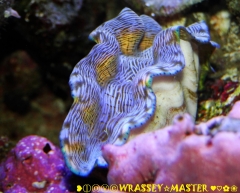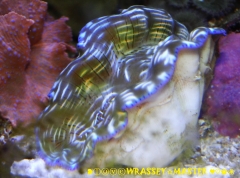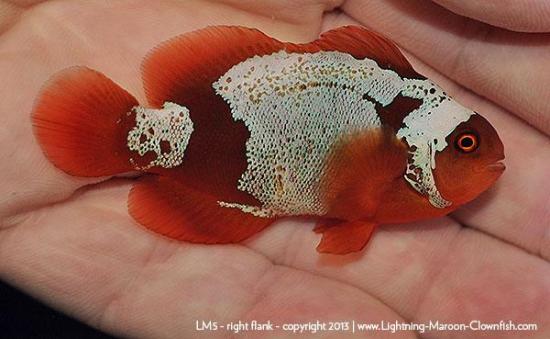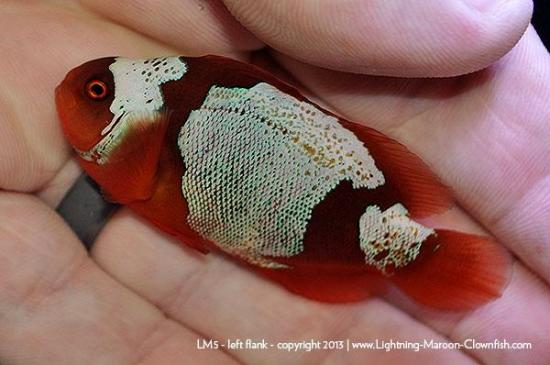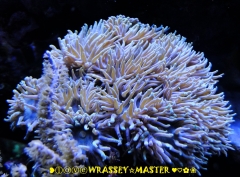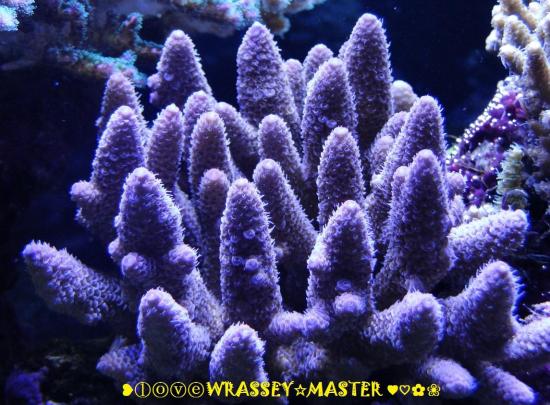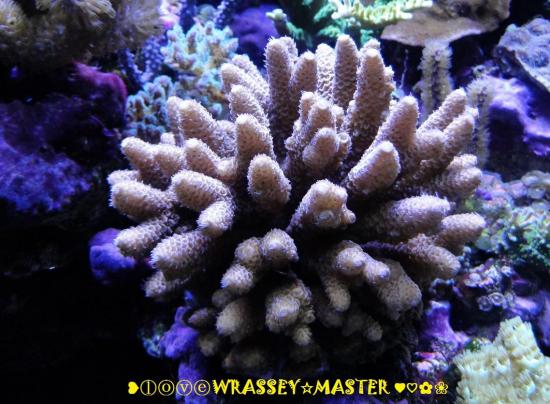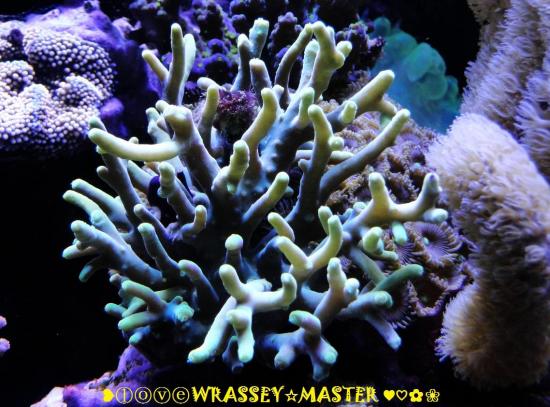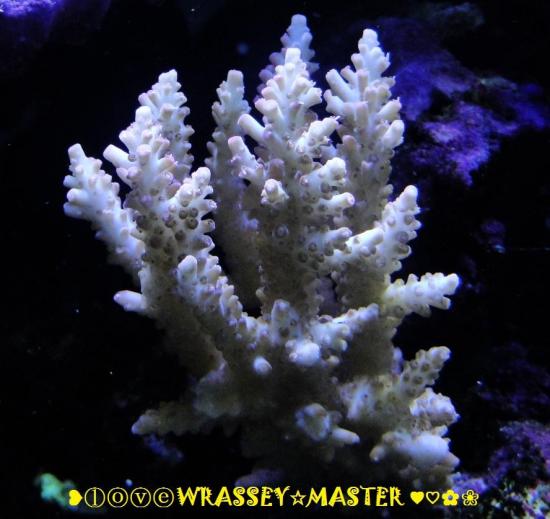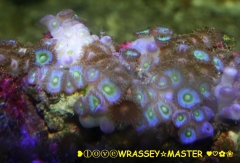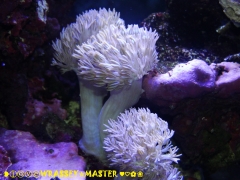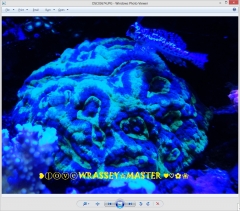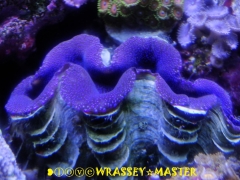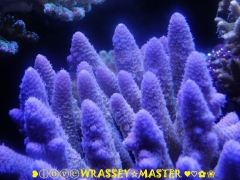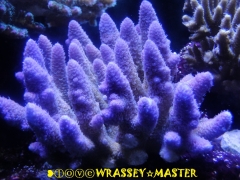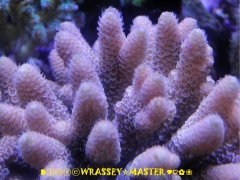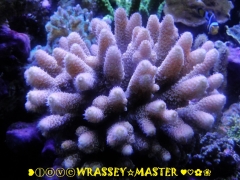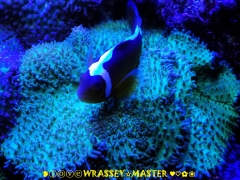-
Posts
4,897 -
Joined
-
Last visited
-
Days Won
7
Content Type
Profiles
Forums
Gallery
Everything posted by kueytoc
-
From the album: WRASSEYMASTER® Reef Paradise
-
From the album: WRASSEYMASTER® Reef Paradise
Tridacna derasa is also referred to as the Southern Giant Clam or Smooth Giant Clam, and is the second largest of all the Tridacna spp., reaching a size of 24" in the wild. Unlike most other Tridacna spp. that have a large byssal opening, Derasa Clams have a narrow gap on the underside of their thick, smooth shell. They can easily be confused with their close relative Tridacna gigas, especially when they are very small in size. T. derasa can be identified by having six to seven vertical folds in their shell which they can close completely, where T. gigas has only four or five vertical folds, and is unable to completely close their hinged shell. Tridacna derasa have a broad range in the wild and are found in the Indo-Pacific, Central Pacific and South Pacific as well as the Coral Sea. They occupy outer reef habitats on both sandy and hard packed substrates, and can be found either solitary or in small aggregations at depths ranging from 10 to 60 feet. All Derasa Clams entering the aquarium trade are cultured in the Central Pacific and South Pacific Ocean. Although they can be found in a variety of colorations and patterns in the wild, the ones aquacultured for the aquarium trade are primarily gold, brown, orange, and yellow, with vibrant blue or green trim edging that surrounds the mantle. T. derasa will arrive unattached to any rock or substrate, and prefer to be placed in the sand or in a recess of a rock, as they do not attach as firmly to the substrate or rockwork like most other members of the genus. In the home aquarium, Derasa Clams require moderate to intense lighting to thrive as they contain the symbiotic algae called zooxanthellae, and receive the majority of their nutrition from the light through photosynthesis. Smaller T. derasa that are 2" or less in size are much more sensitive to very intense lighting as their membrane is much thinner than larger specimens. For this reason care should be taken to properly photo-adapt them to the existing reef aquarium lighting in a similar manner to newly introduced stony and soft corals. When adapting a new Derasa Clam to very intense lighting, it is ideal to set them on a small rock or in a plastic dish with coarse substrate at the bottom of the aquarium. Over time, the clam can then be slowly moved up higher in the aquarium. When maintained in the proper environment, smaller Derasa Clams can double or triple their size in less than a year. Tridacna clams are also filter feeders and constantly filter the water for small particulates. Derasa Clams larger than 2" do not require supplemental feedings, but smaller T. derasa that are less than 2" should be fed a phytoplankton or greenwater supplement several times per week if maintained in a nutrient poor reef aquarium. Tridacna derasa are the hardiest and most adaptable of all the Tridacna spp., and require moderate to intense lighting and good water flow in the home aquarium. Proper water chemistry is very important, and they will thrive when calcium levels of 380- 450 mg/L, alkalinity level of 8-11 dKH, and magnesium level of 1280-1350 ppm are maintained. -
-
From the album: WRASSEYMASTER® Reef Paradise
-
From the album: WRASSEYMASTER® Reef Paradise
-
-
-
Veri swee Suharsonai. Where did U purchase this bro ?
-
-
Welcome back !!! Ya collection is superb
-
Simply beautiful !!!
-

Ocean Flowerbed - The 31x31x36 (cm) nano tank
kueytoc replied to gingerwrasse's topic in Members Tank & Specs
Great ZOAs collection U have... -
Nicezzz ! Where's ya Aussie Candlelight showpiece mate ?
-
From the album: WRASSEYMASTER® Reef Paradise
-
Pulsing Xenia mystery solved By Brian Blank on Apr 30, 2013 Read more: http://reefbuilders.com/2013/04/30/pulsing-xenia-mystery-solved/#ixzz2S2kA3eGV The pulsing Xenia has been a scientific mystery for that last 200 years since it was first discovered by Jean-Baptiste Lamarck (1744-1829). Why does this particular coral spend so much energy pulsating? Corals are extremely efficient organisms and do not waste energy unless there is compelling enough benefit — in this case nutrients. Why does the Heteroxenia fuscescens go through all that fuss? Seems like a lot of wasted energy doesn’t it? Recent research by a team of scientists from the Hebrew University of Jerusalem and the Technion-Israel Institute of Technology finally have a few answers released in a recent issue of the Proceedings of the National Academy of Sciences. The team discovered the motion of the polyps helps with binding of carbon dioxide to the photosynthetic enzyme RuBisCo (Ribulose-1,5-bisphosphate carboxylase oxygenase), while also decreasing photorespiration. This led the team to the conclusion that in the case of H. fuscescens, the benefit overcomes the cost. Because of the pulsation, the ratio between photosynthesis to respiration in this Xenia is the highest ever measured in stony and non-pulsating soft corals. We know corals rely on water flow to deliver nutrients and organisms also alter the flow around them as well. By studying the flow around Xenia colonies, the team used an underwater measuring device called PIV (particle imaging velocimetry). This allowed the team to record highly accurate measurements of the flow field around the Xenia in their natural habitat at night. Through the data provided, the team discovered the motion of the polyps sweeps water up and away from the coral tissues and into the surrounding water. If you’ve ever been entranced with the pulsing motion of the Xenia, you’ll recall that the polyps do not pulse in a synchronized motion. Despite this, the overall result for the colony is significantly enhanced flow that helps reduce the chance of refiltering the same water. Armed with new data and the hypothesis that the pulsation motions enhance the coral’s photosynthesis rate, the team was able to get clearance from the government to harvest a few colonies for experiments in the lab. The zooxanthellae in corals requires CO2 during the day and oxygen at night as well as other nutrients (like phosphate and nitrogen) all day. Now it makes sense that coral colonies would want to increase the concentration of these essential commodities around them by being able to mix the ambient water. But again, why would the Xenia use so much energy just to mix the water? The team measured the photosynthesis rate of the pulsating Xenia colony was found to be an order of magnitude higher than when it is at rest. The researchers increased the oxygen levels in the tank so as the corals pulsated and mixed the water, instead of pulling in CO2-rich water they were pulling oxygen-rich water into the colony. The team found out that when the higher oxygen levels led to low photosynthesis rates — just as if the coral was at rest — proving their hypothesis. One other interesting observation was the pulsing Xenia pump continually only taking a daily half-hour break in the afternoon. This is still one mystery the team was unable to unlock.
-
Read more: http://reefbuilders.com/2007/01/14/new-coral-xenia-corla/#ixzz2S2jL1y9S on Xenia Coral : Hardiness: Xenia is an interesting family of coral as far as hardiness is concerned. Some hobbyist cannot seem to keep this coral alive and others find it to be a fast growing ‘weed’ coral. Although there are some guidelines which can be followed to improve the chance of success, no one fully understands what will guarantee success with this coral. Even a colony that has been thriving in a tank for an extended period of time can quickly go into decline and die for no obvious reason. Lighting: Requires moderate to strong lighting. Usually, brighter is better although some hobbyist appear to have very good success with lower light levels. Water Current: Xenia require at least moderate water flow. They are one of the few corals that seem content to be right against the strong output of a powerhead. In still waters the pumping usually diminishes and the coral goes into decline. Temperature: Does well within a range of at least 75º to 83º F. Temperatures around 84º can sometimes appear to cause stress and Xenia appears to be more stable at lower temperatures of 76º – 78º. Aggressiveness: Low. Xenia does not possess any apparent stinging capability and will not bother other corals, but can tend to grow over and shadow its neighbors. When happy, the coral can reproduce by division at an alarming rate and may require frequent pruning to keep it from crowding out other corals. Feeding: Xenia is photosynthetic and does not accept any known foods. It is thought that they absorb some of their nutrients directly from the water. In fact, some hobbyist keep large colonies of Xenia as filter beds where the xenia is regularly pruned for nutrient export. It is unclear if this is very effective. Xenia may do better in tanks that are not heavily skimmed. Supplements: The main supplement normally associated with successfully keeping Xenia is Iodine. Many authors state categorically that iodine supplements are critical to success and lack of iodine supplements will cause xenia to crash. I have keep Xenia with and without iodine supplementation and have observed no difference, so I am more skeptical of the iodine connection. Low Alkalinity levels can cause Xenia pulsing to decrease or cease altogether, so alkalinity levels should be monitored and kept above a minimum of 2.5meq/l. Tank Positioning: Usually kept high up on the reef for strong water flow and highest possible lighting. Xenia will reproduce in the tank by attaching its stalk against adjacent surfaces it contacts and splitting into two colonies. In this way, Xenia colonies tend to ‘walk’ in the direction that water movement bends their stocks, so you may want to consider this in your placement. Xenia can usually be coaxed to grow up the back glass of the tank and forms a nice background display.
-

Synchiropus moyeri resting on Australomussa Rowleyensis
kueytoc commented on kueytoc's gallery image in Members Gallery
-
From the album: WRASSEYMASTER® Reef Paradise
For forum discussion on Farm-Raised Blue Squamosa Clams, please read : http://www.nano-reef.com/topic/321950-farm-raised-blue-squamosa-clams/ Saving Giants (ebook) - Cultivation and Conservation of Tridacnid Clams : http://store.blurb.com/ebooks/374835-saving-giants The Future of Mariculture on Youtube : -
From the album: WRASSEYMASTER® Reef Paradise
-
From the album: WRASSEYMASTER® Reef Paradise
Endemic to Australian reefs, Acropora spathulata like the classic Acro Milli, has characterisitc scalloped radial corallites which join together to almost look like chain mail. What makes A. spathulata stand out is that it has much thicker branches than Acro milli, especially at the base, and the scalloped radial corallites are even more pronounced. -
From the album: WRASSEYMASTER® Reef Paradise
-
From the album: WRASSEYMASTER® Reef Paradise
-
From the album: WRASSEYMASTER® Reef Paradise
-

Synchiropus moyeri resting on Australomussa Rowleyensis
kueytoc posted a gallery image in Members Gallery
From the album: WRASSEYMASTER® Reef Paradise
For more information about Australomussa Rowleyensis, check out this story from ReefBuilders : Australomussa rowleyensis colonies from Timor Indonesia put this coral on the map ; http://reefbuilders.com/2010/06/25/australomussa-rowleyensis-colonies-timor-indonesia-put-coral-map/


